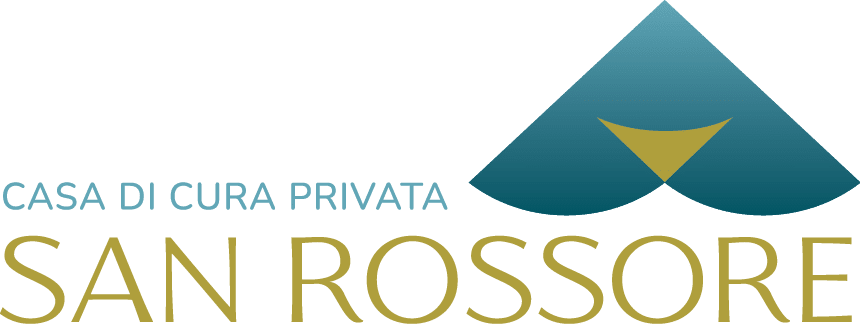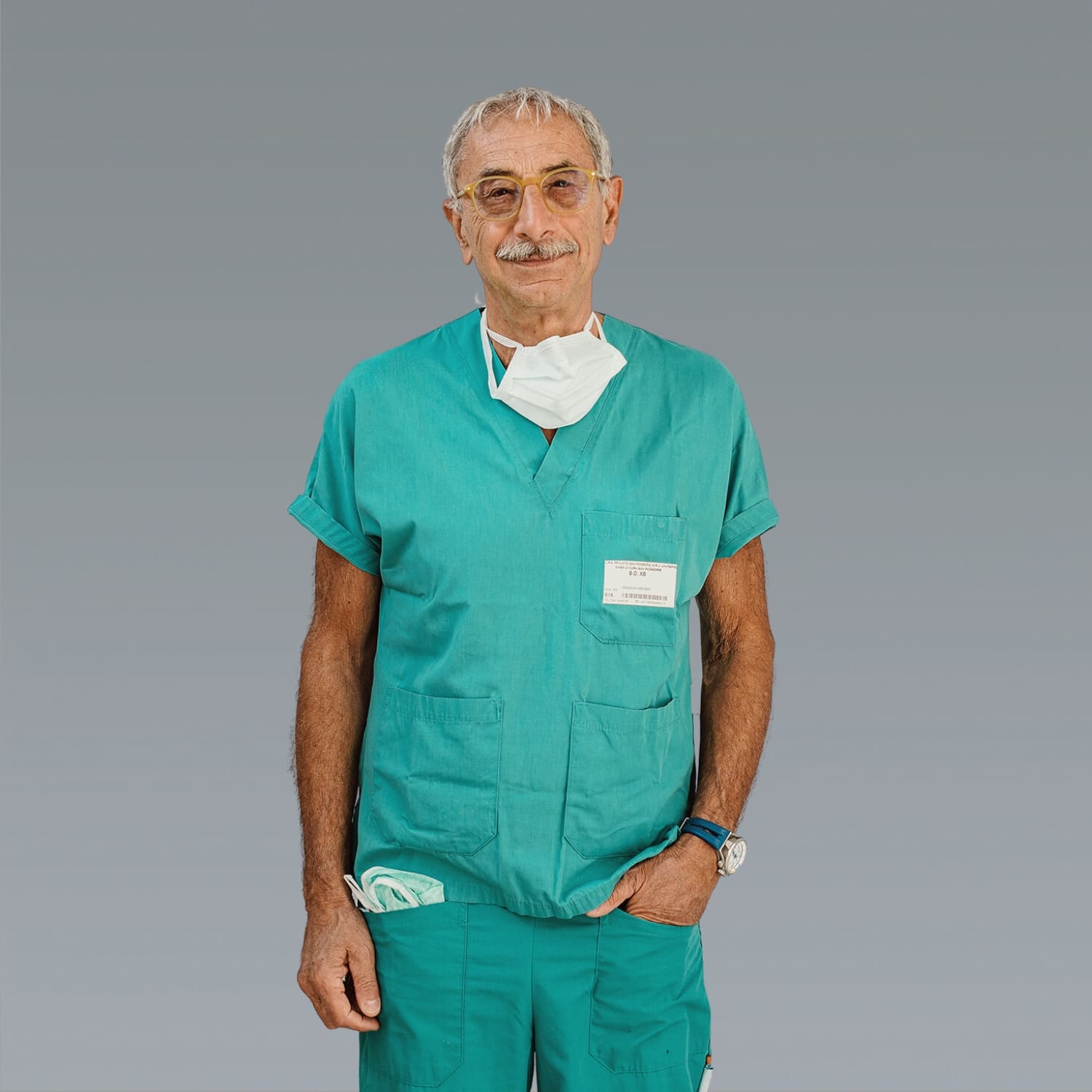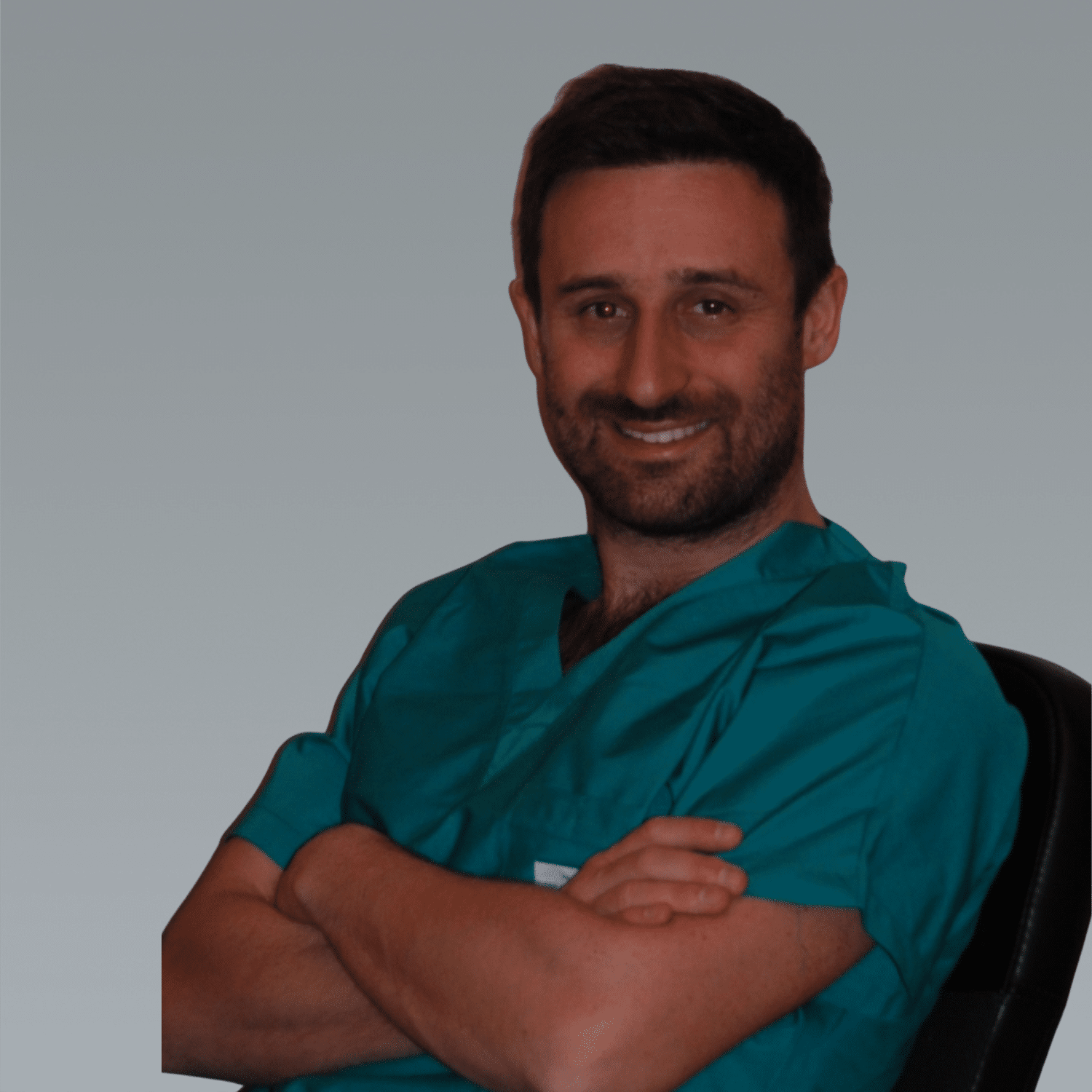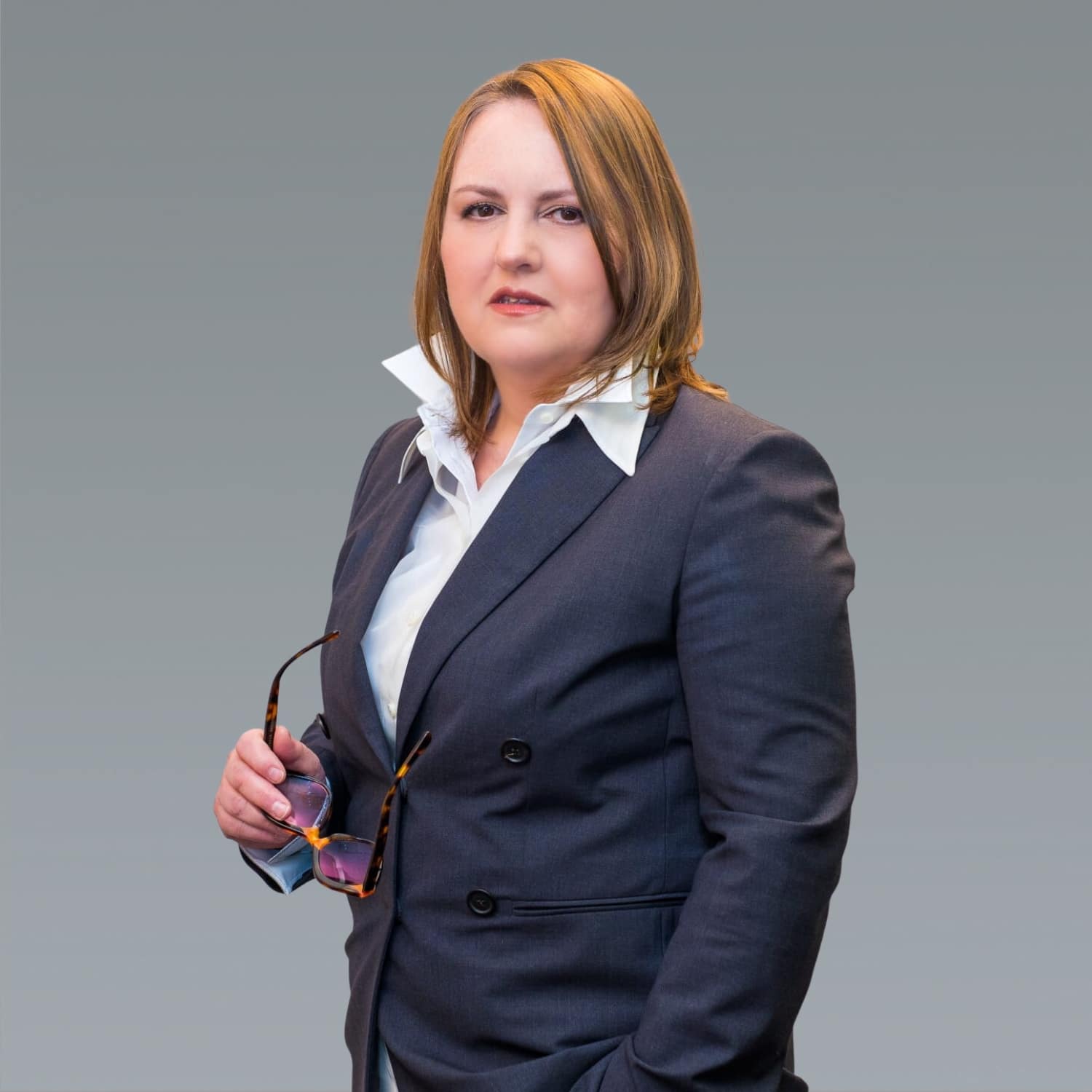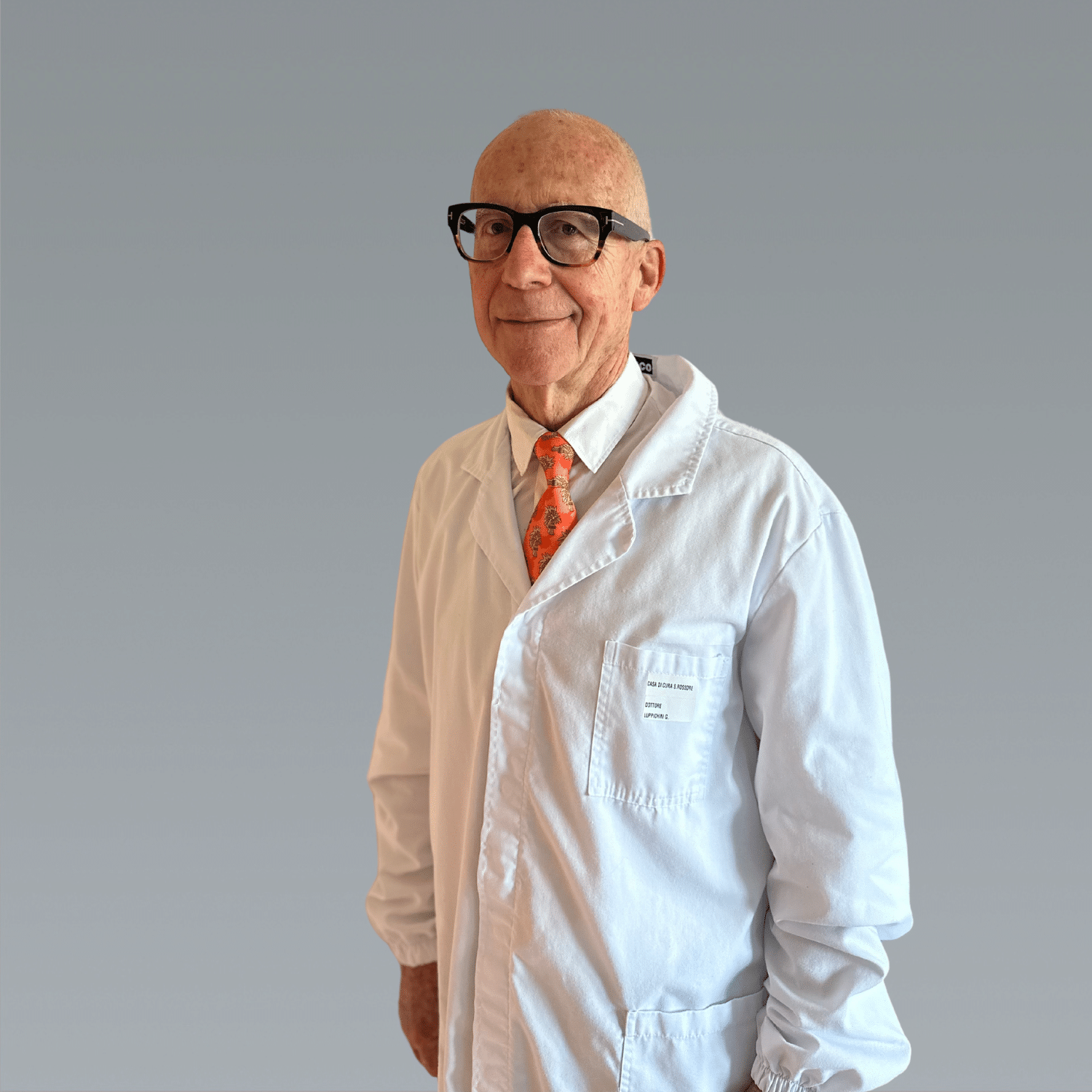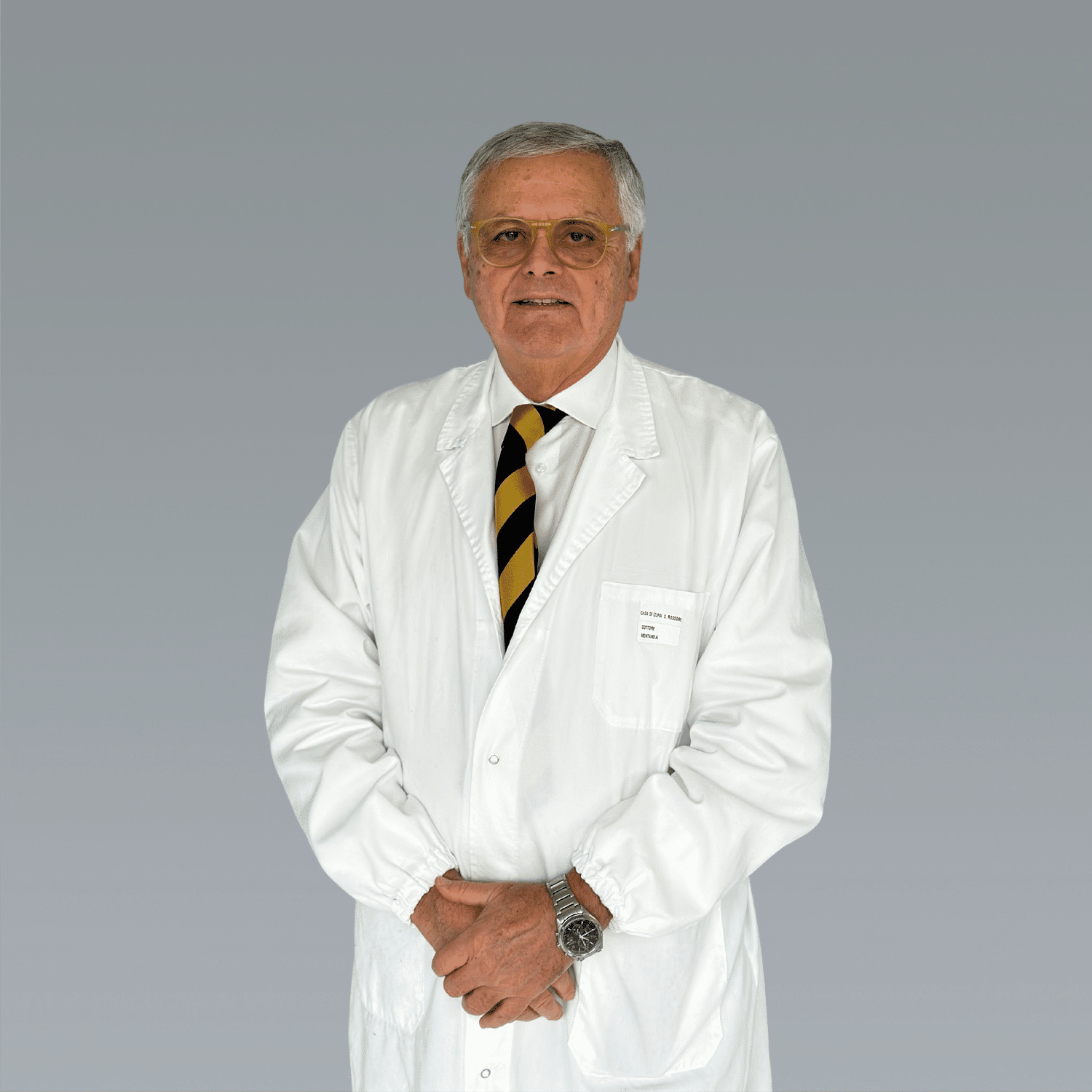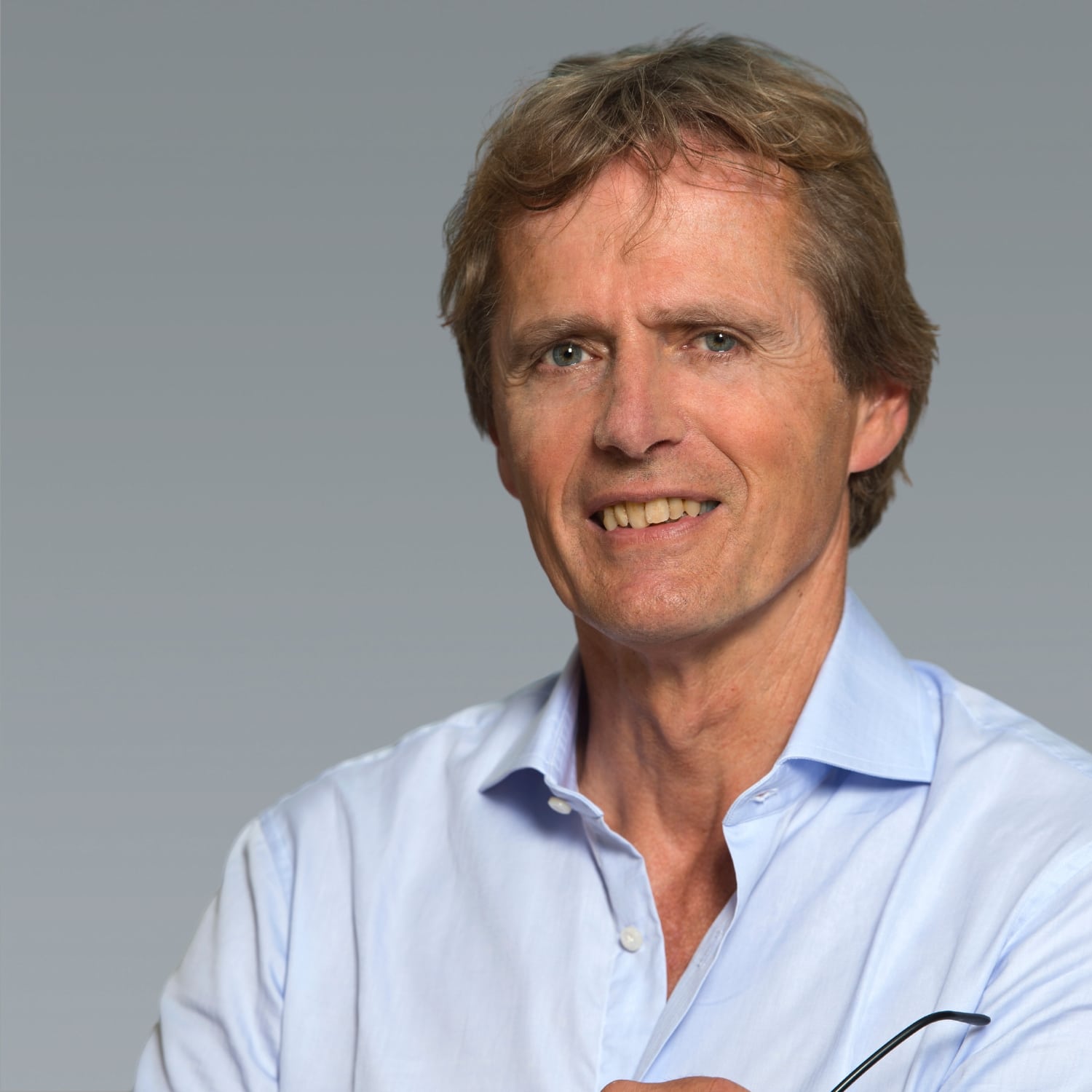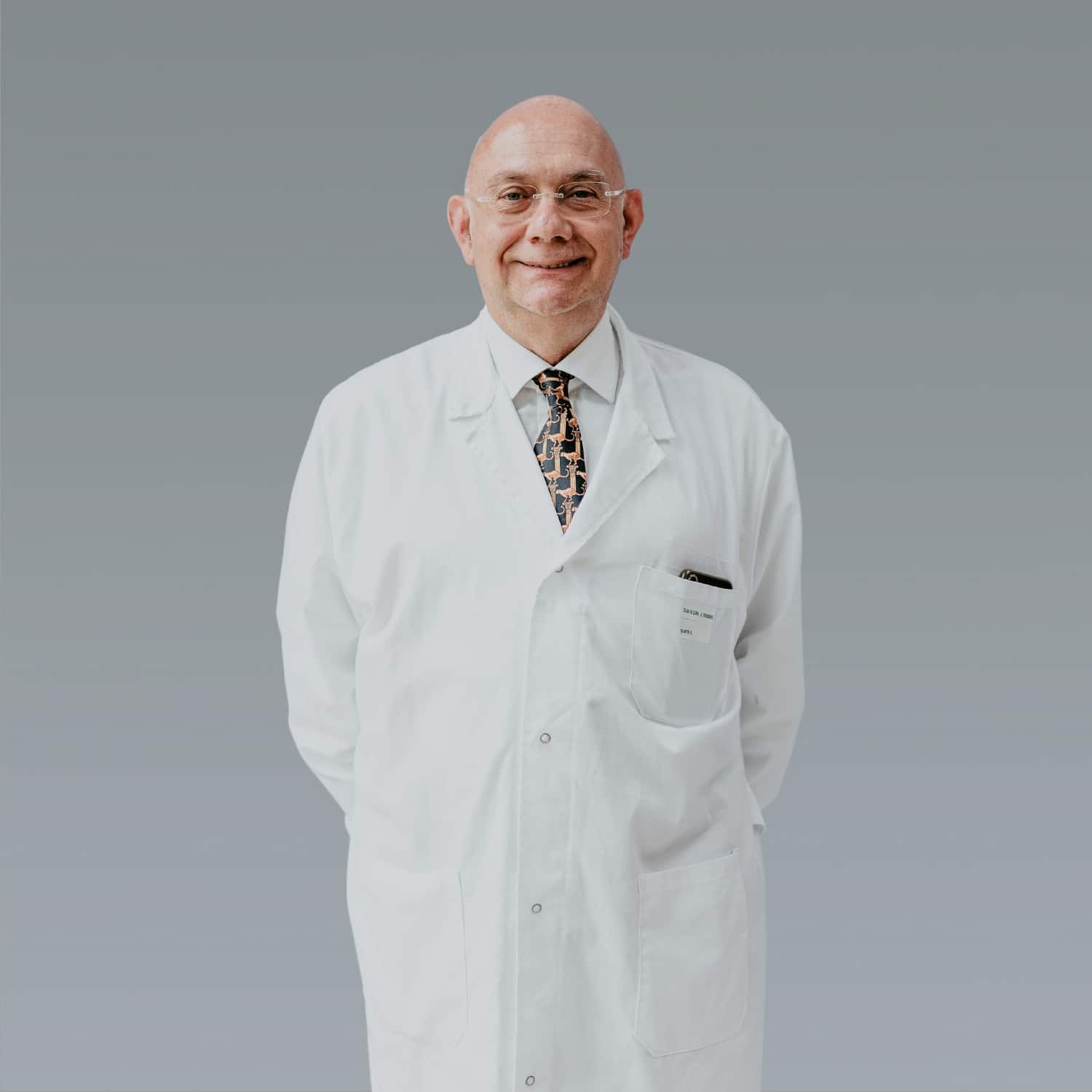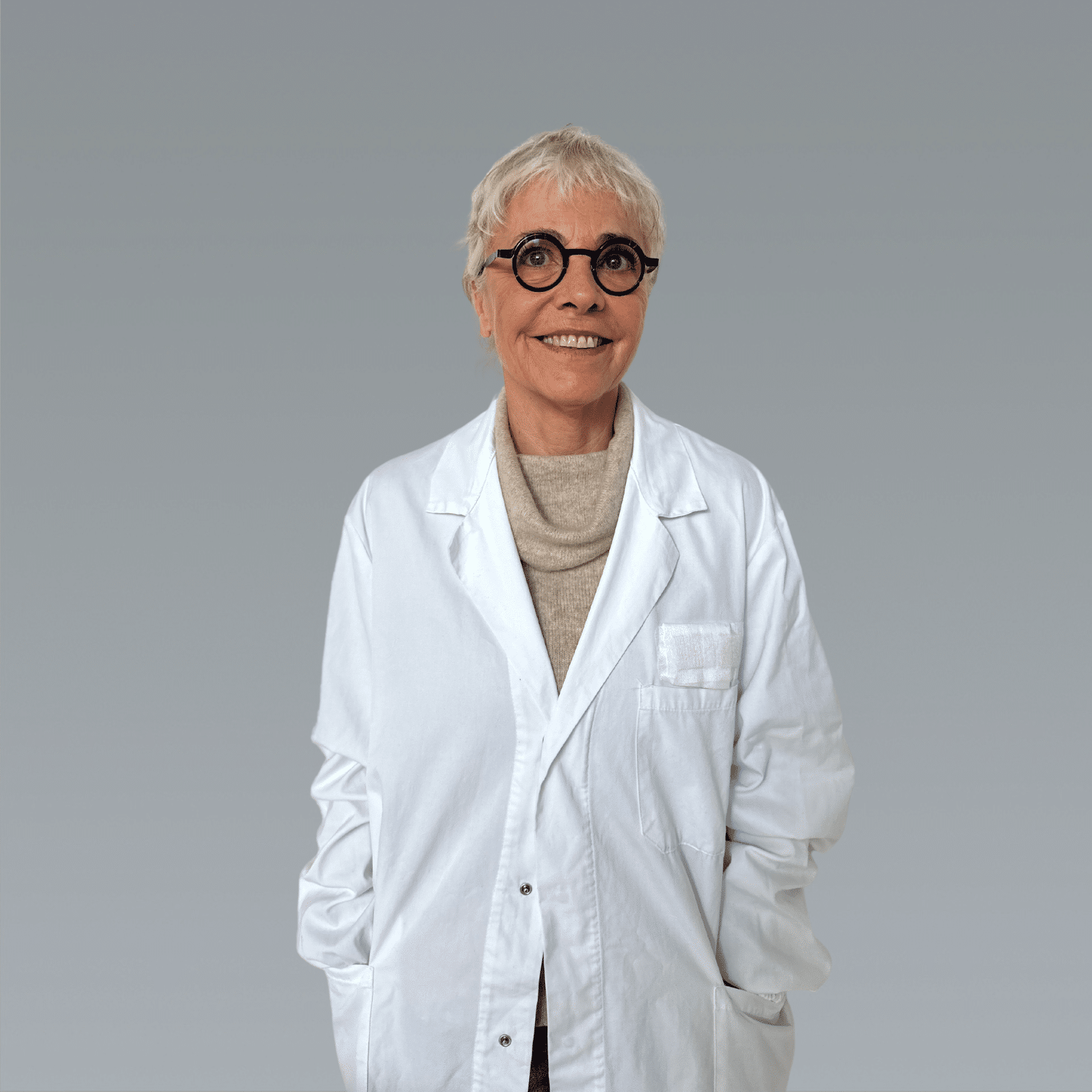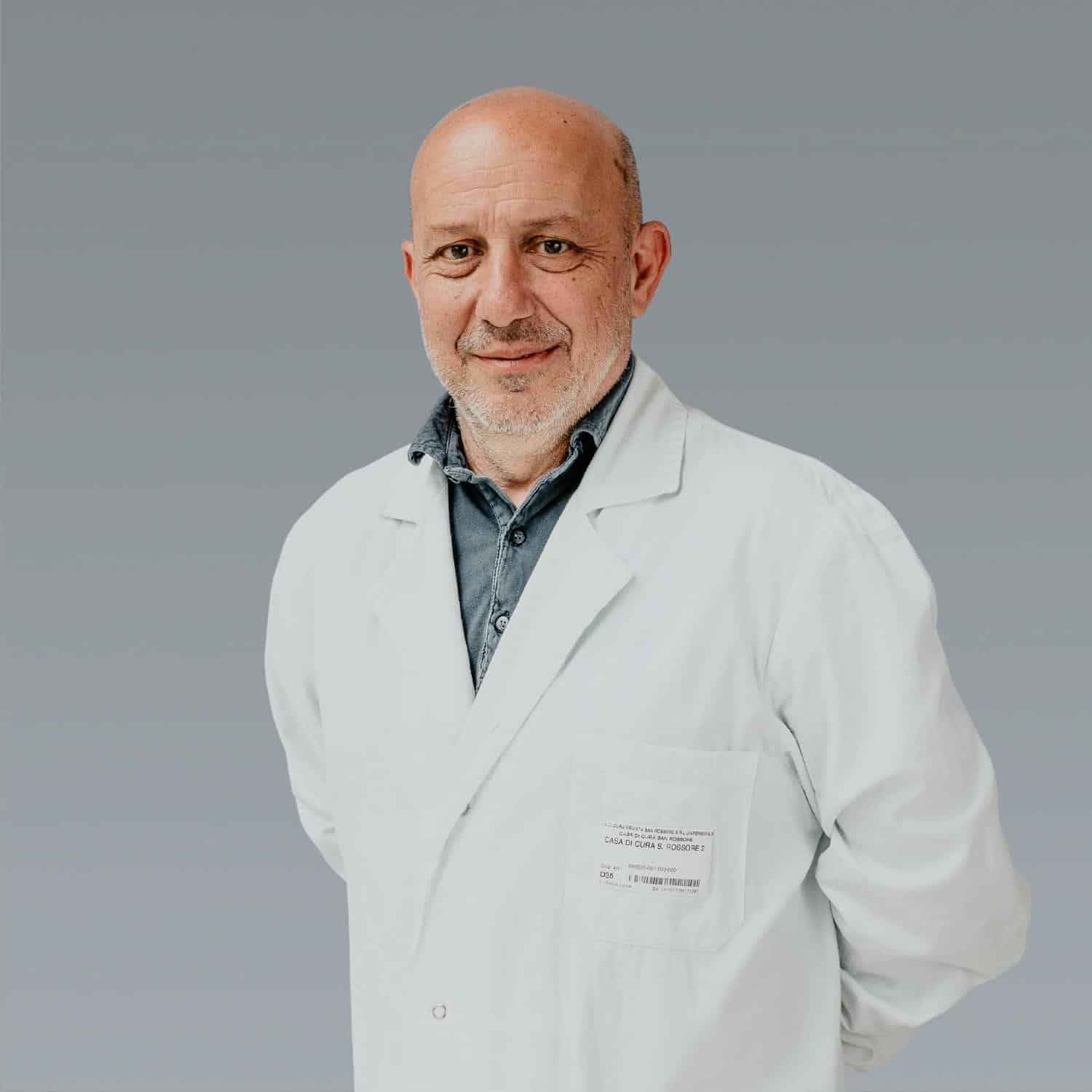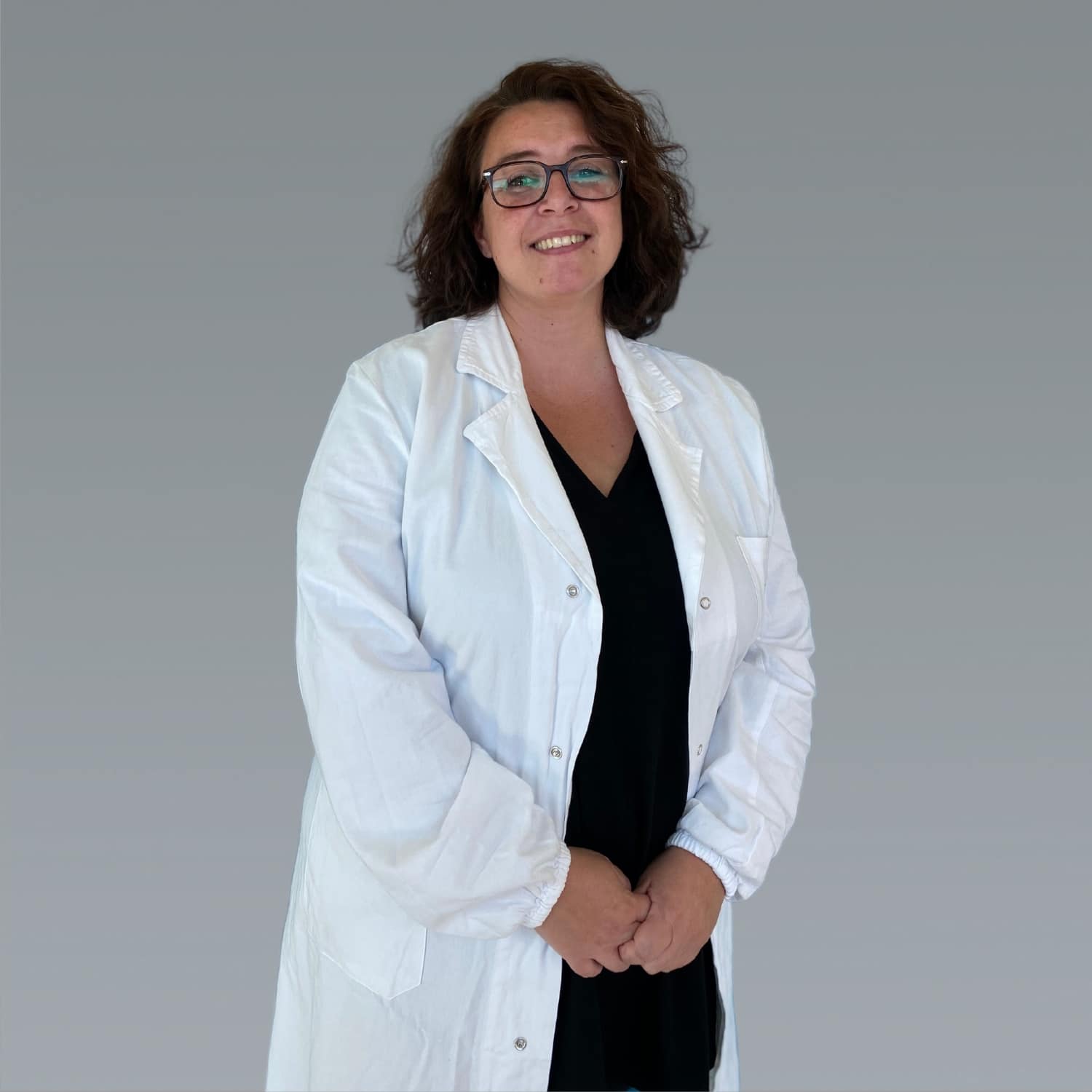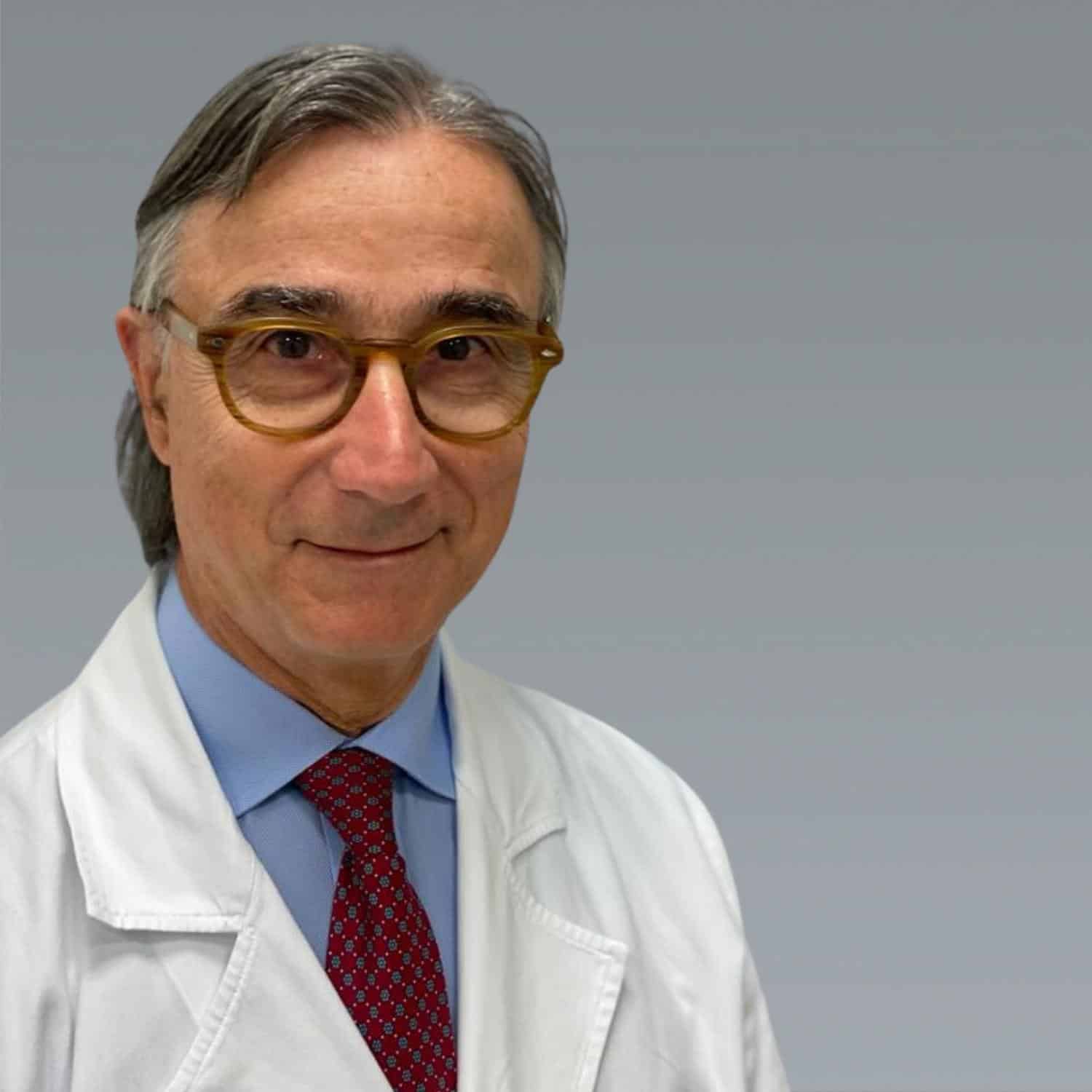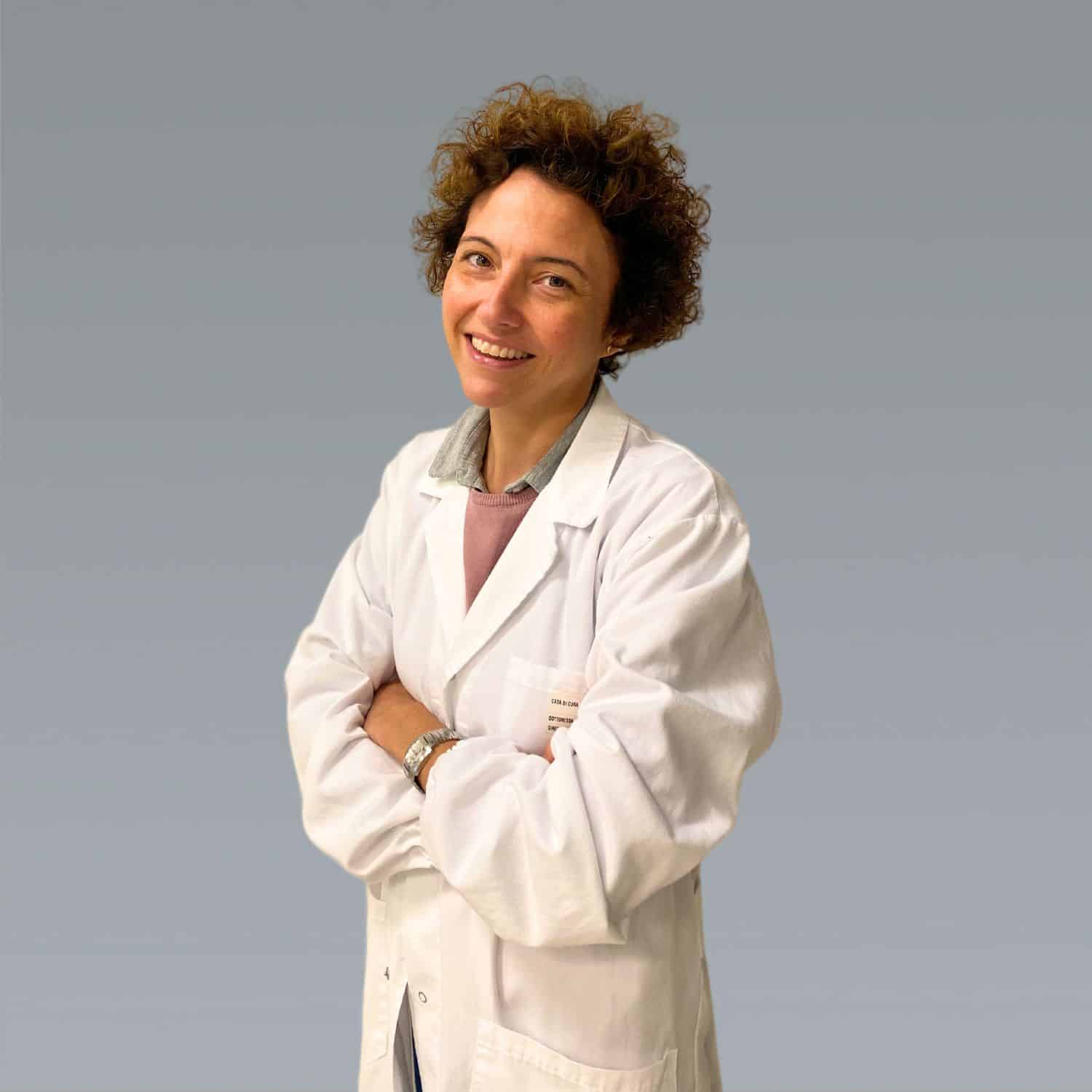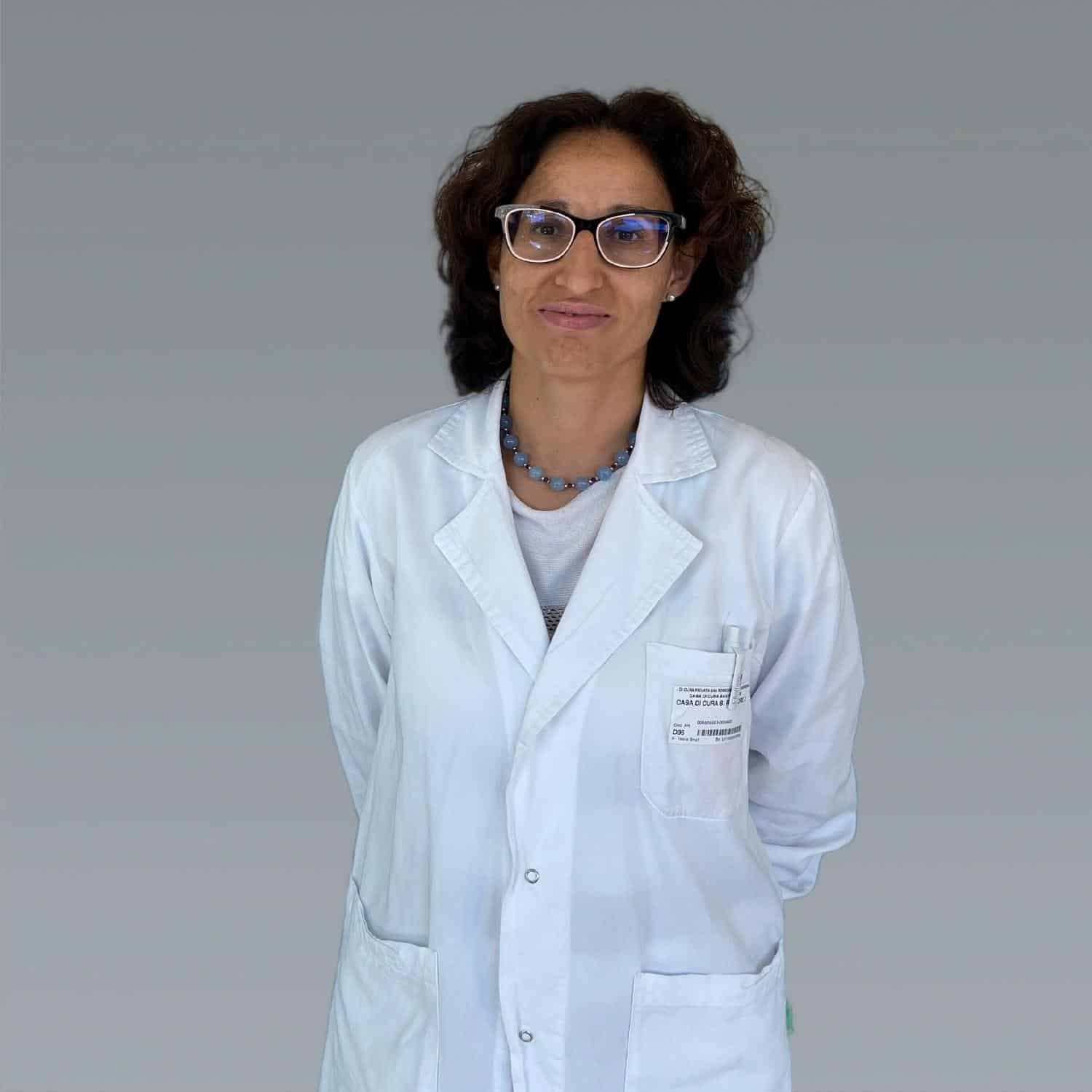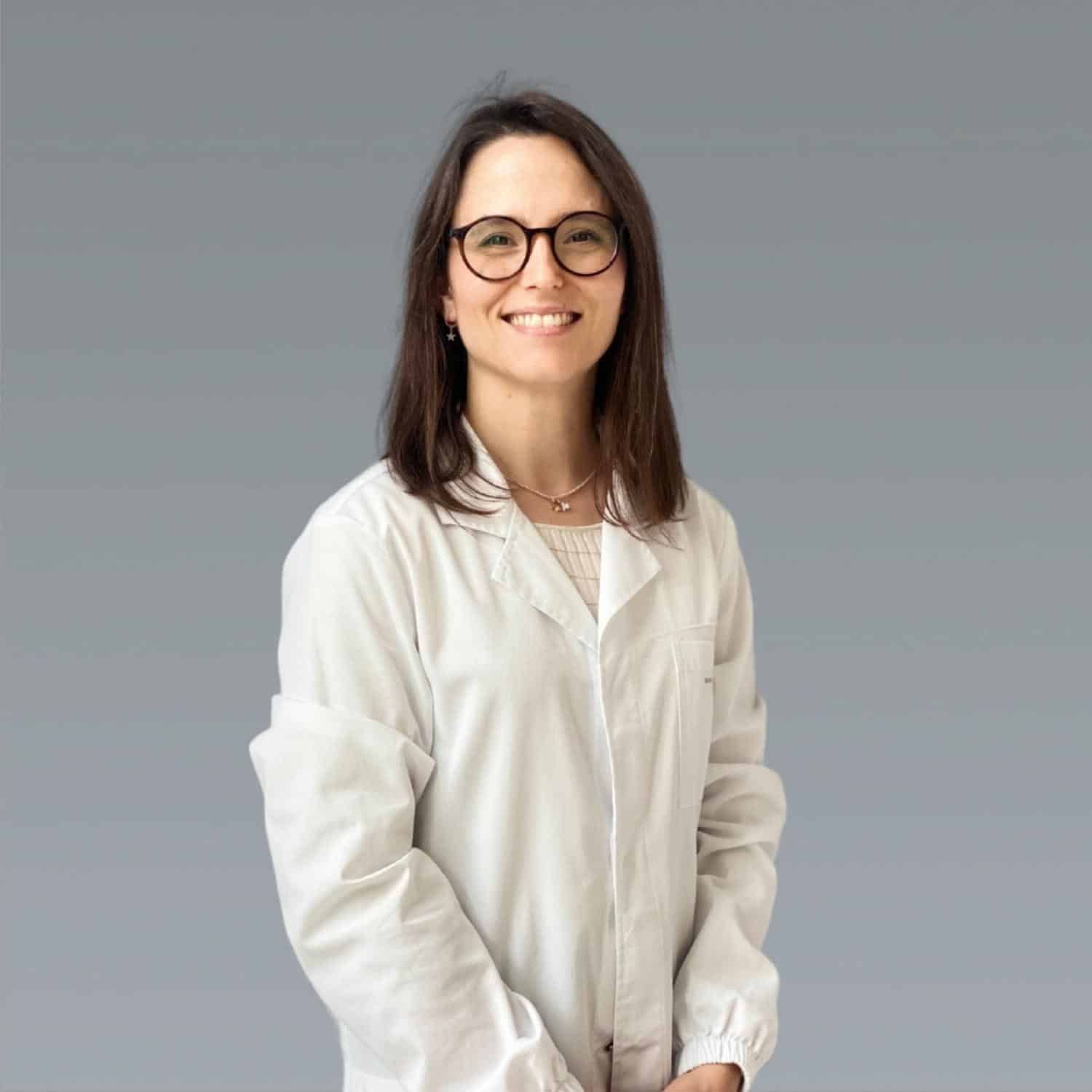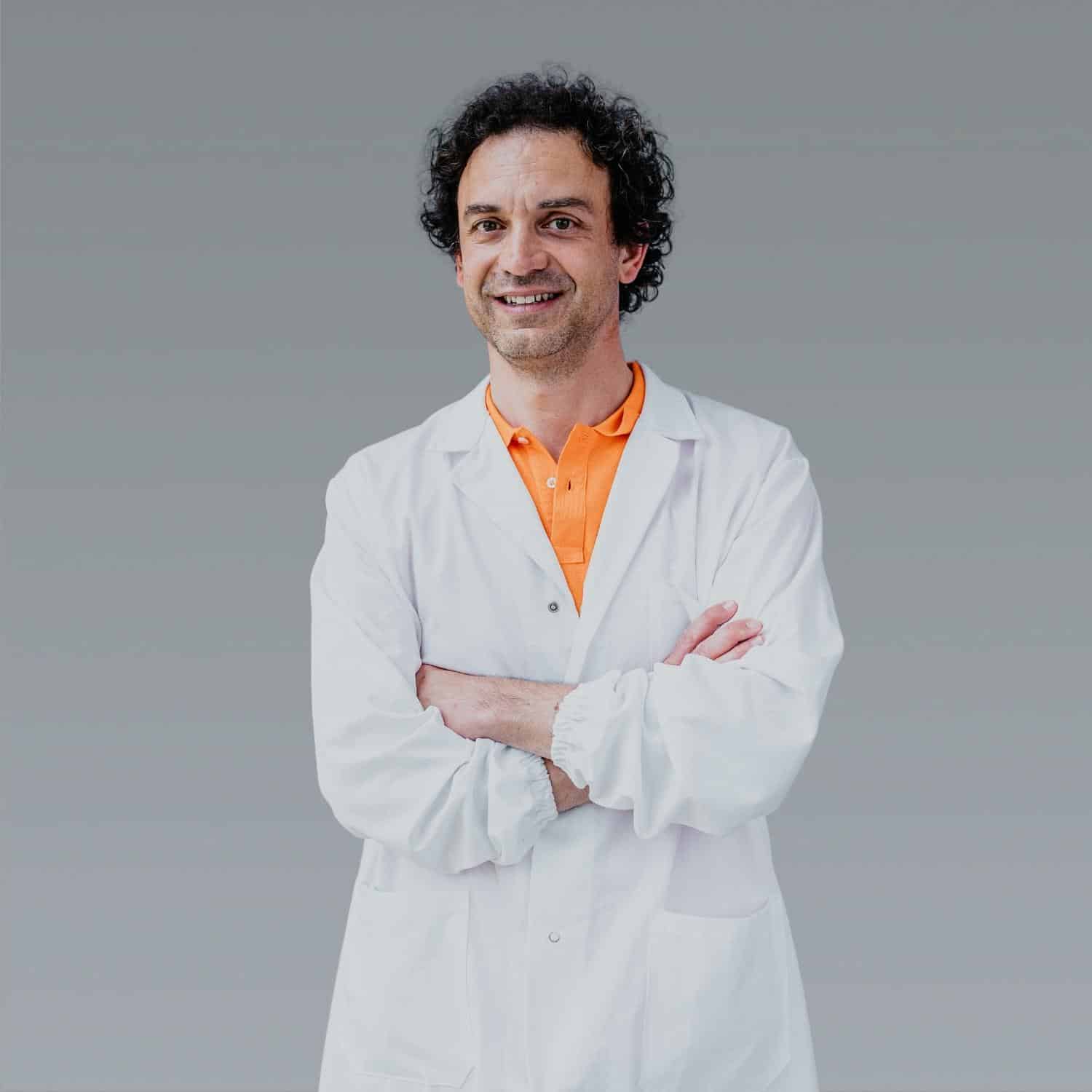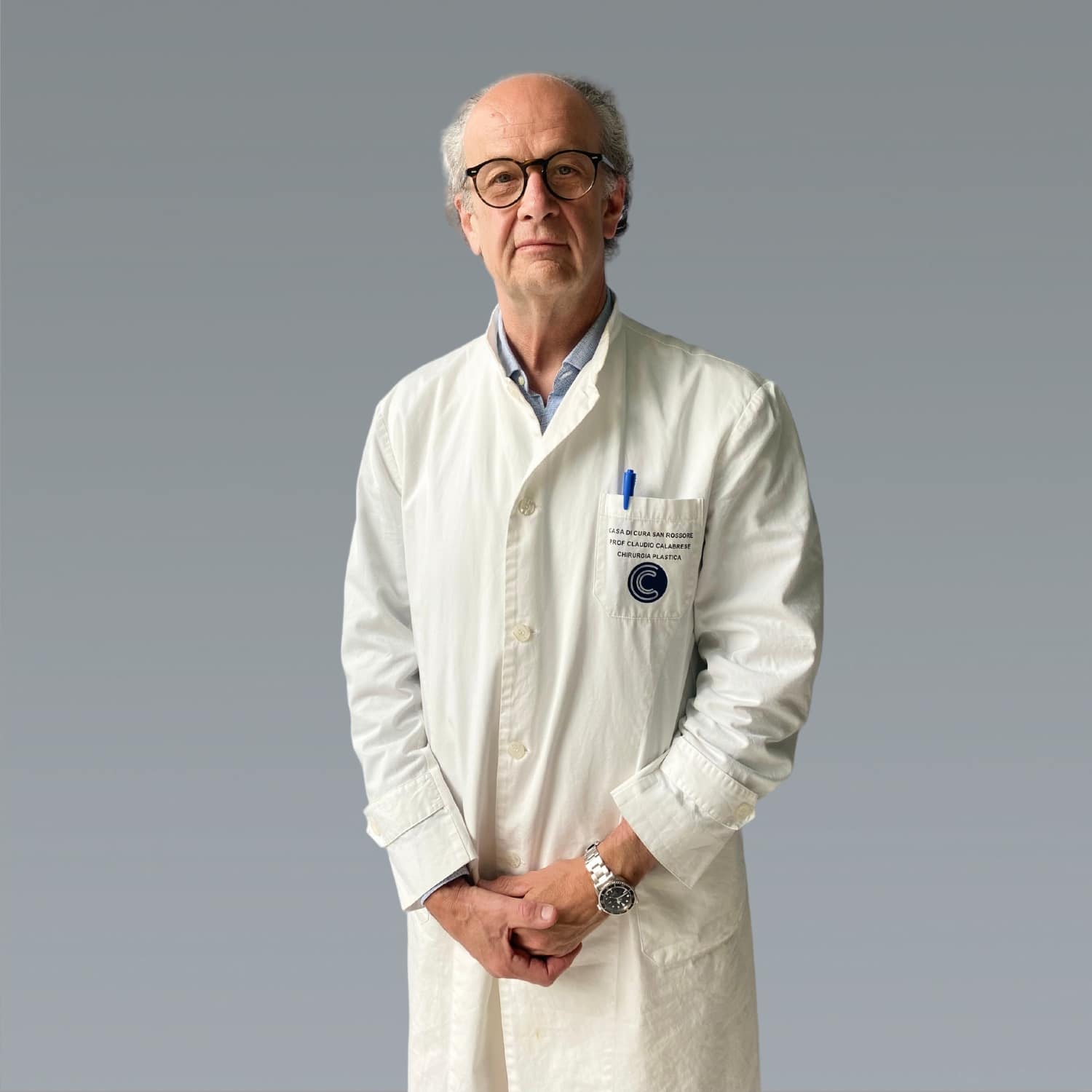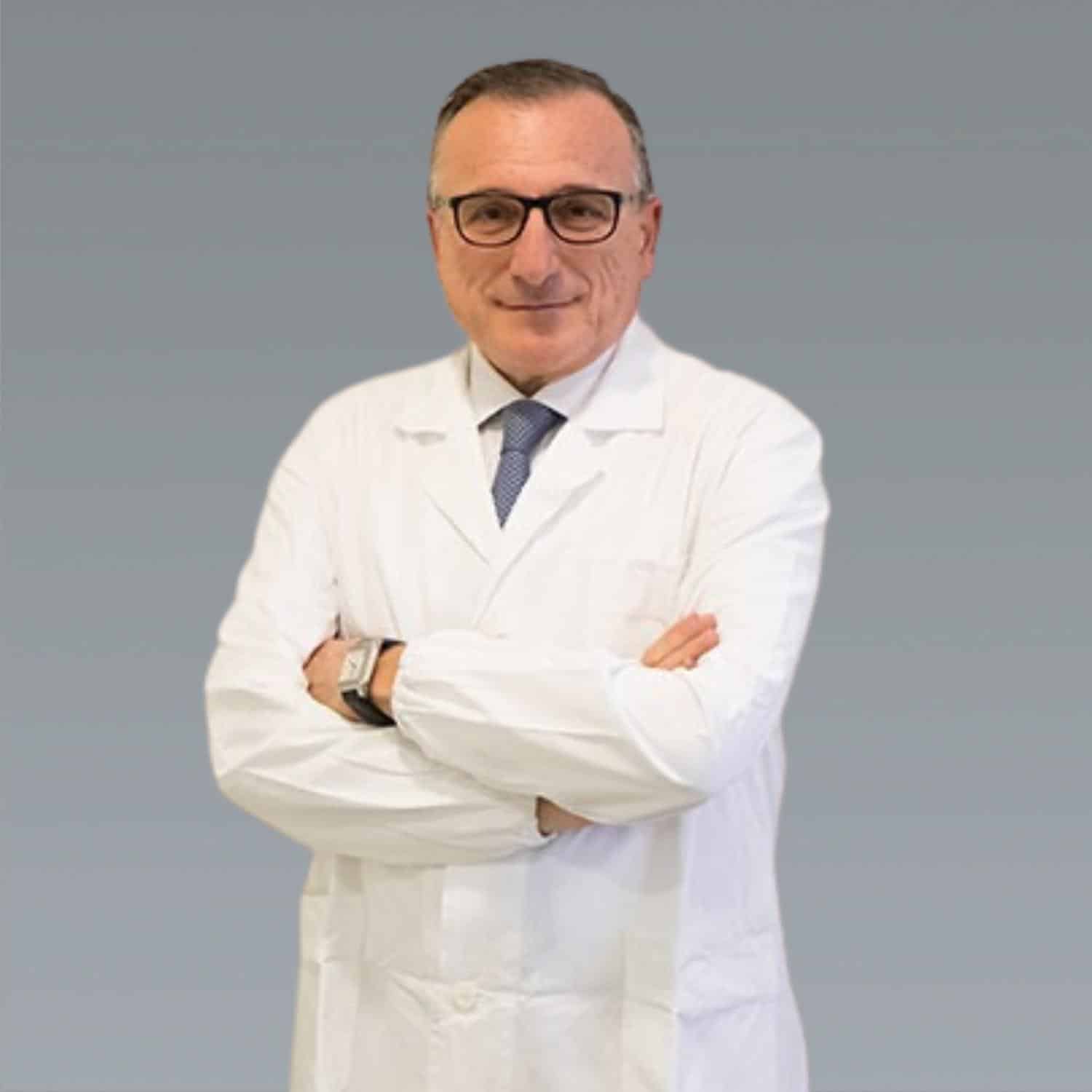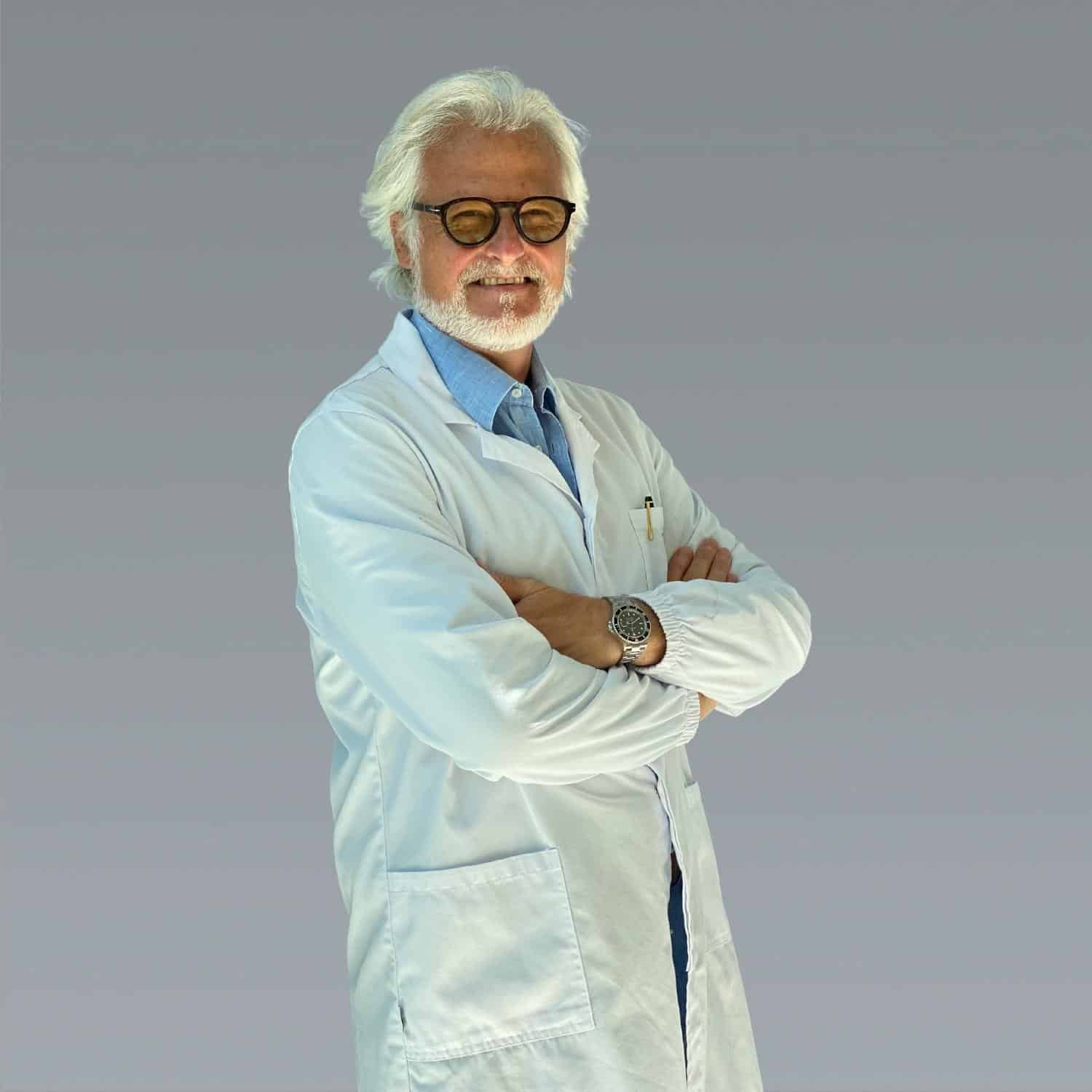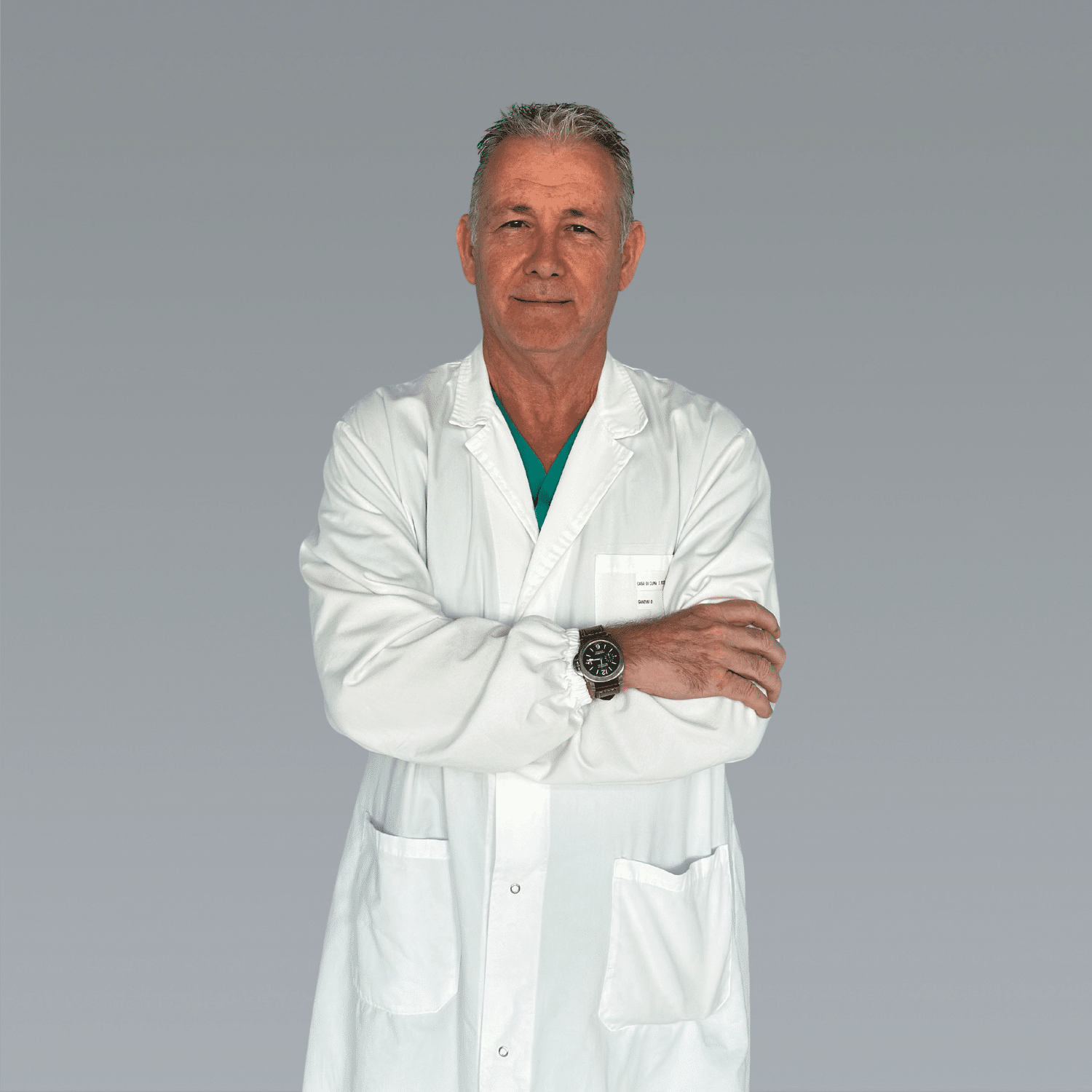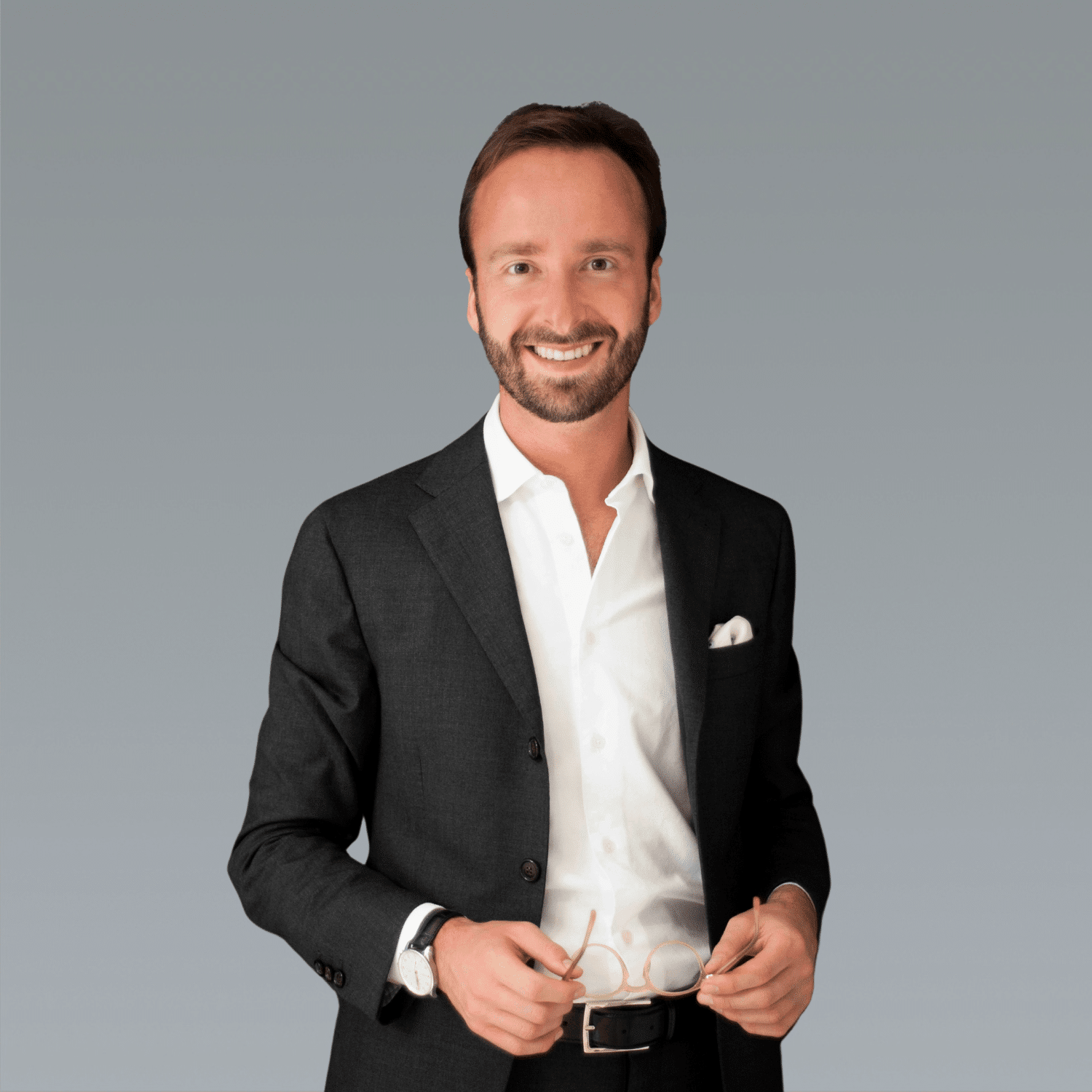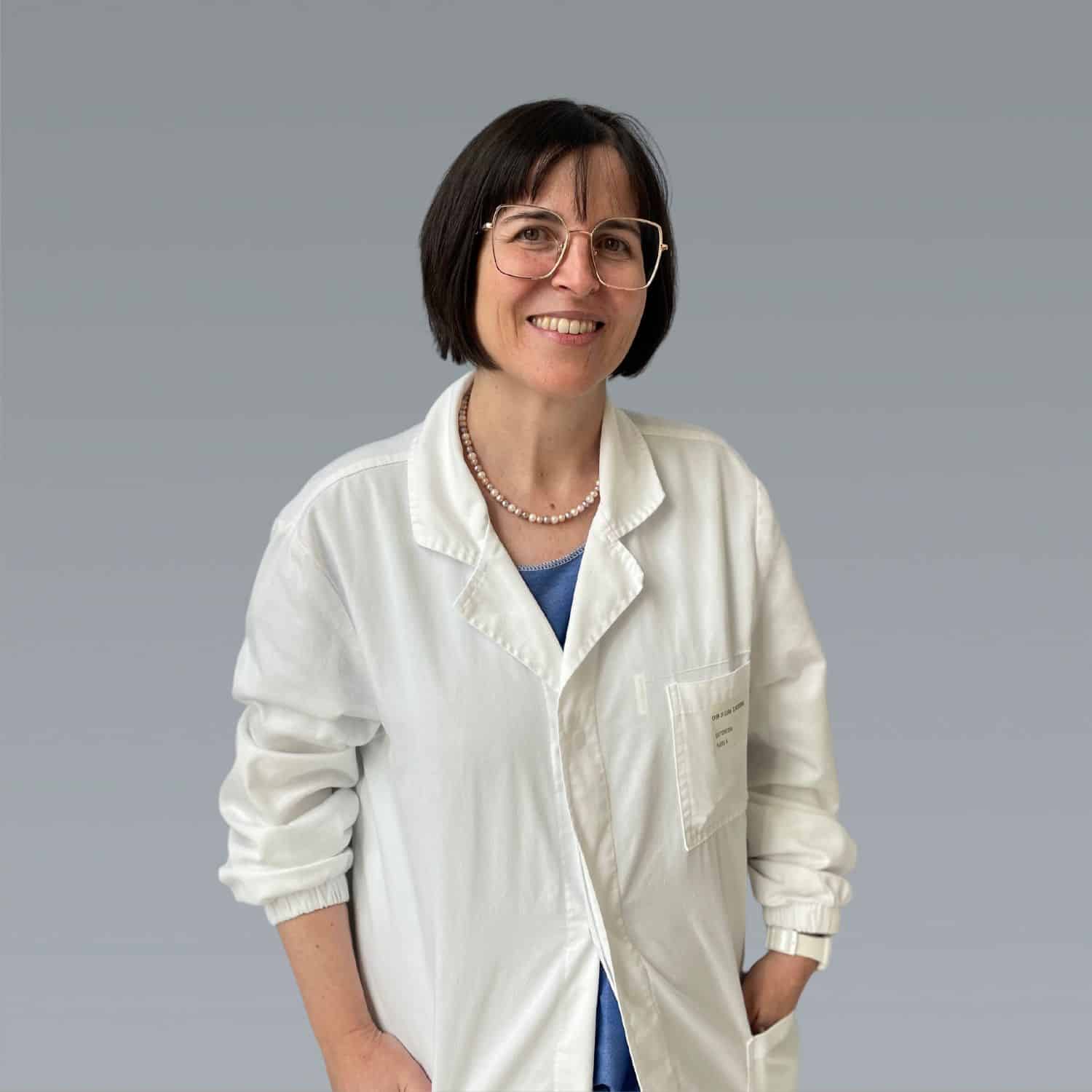Orthopedics and traumatology
Orthopaedics and Traumatology
Queste specialità si occupano di studiare l’apparato locomotore e di diagnosticare e trattare le patologie che interessano ossa, articolazioni, legamenti, tendini e muscoli.
Orthopedics specifically studies pathologies:
- Of the spine
- Of the shoulder
- Of the hand
- hip
- Of the knee
- Of the foot
The trauma is concerned with all injuries resulting from trauma to bones (fractures), tendons, muscles, ligaments, and joints.
- Spinal pathology
- Kyphosis and Scoliosis of Childhood and Adolescence
- Cifosi e Scoliosi dell’adultoKyphosis and Scoliosis of the Adult
- Osteoporosis and vertebral failures
- Disc hernias
- Spondylitis and Spondylodiscitis
- Primary and/or secondary tumors of the spine
Shoulder pathologies:
- Sub acromial conflict syndrome
- Rotator cuff injury
- Shoulder instability and dislocation
- Arthrosis with possible prosthetic treatment (total prosthesis, resurfacing prosthesis or reverse prosthesis).
- Pathology of the Hand
- Carpal tunnel syndrome
- Canalicular syndromes of peripheral nerves (ulnar at elbow and ulnar at wrist)
- De Quervain’s syndrome
- Finger Snap
- Trapeziometacarpal arthrosis or Rizoarthrosis
Hip pathologies
- Arthrosis with possible treatment with prosthesis using minimally invasive surgical technique
- The Acetabular Conflict
Pathologies of the Knee
- Arthrosis with possible prosthetic treatment (total prosthesis or monocompartmental prosthesis)
- Meniscal injuries
- Cartilage lesions and their treatment by conservative therapy with chondroprotective drug infiltrations, hyaluronic acid, and/or viscosupplementation
- Ligamentous injuries and in particular the anterior cruciate ligament
- Femororotulae syndrome
- Patellar tendinopathies
Foot Pathologies
- Hallux Valgus
- Metatarsalgia
- Hammer fingers
- Congenital malformations such as congenital clubfoot, hypometrae and superadducted 5th toe
- Flatfoot of the child and adolescent
- Canalicular syndromes (tarsal tunnel syndrome and/or Civinini Morton syndrome)
- Plantar fasciitis
Regarding Traumatology at the Casa di Cura San Rossore, all types of fractures, non-emergency, of both children (above 4 years of age) and adults can be treated with open techniques and possible prosthetic, minimally invasive and percutaneous replacements.
Inoltre possono essere diagnosticate e trattate (con le migliori tecniche mini-invasine) le lesioni tendinee quali la lesione del tendine di Achille, la lesione del tendine rotuleo e la lesione del tendine quadricipitale, l’epicondiliti (gomito del tennista) e le tendinosi associate a peritendiniti dell’achilleo e del rotuleo.Regarding Traumatology at the San Rossore Treatment Center, all types of fractures, non-emergency, of both children (above 4 years of age) and adults can be treated with open techniques and possible prosthetic, minimally invasive and percutaneous replacements.
Performance and therapy
The trend in surgery today is to use increasingly innovative and minimally invasive techniques in order to reduce complications, but more importantly to improve and shorten the postoperative recovery process. Percutaneous foot surgery is a revolutionary surgical technique that fits well into this process. In fact, due to its minimally invasive nature, it is rapidly gaining popularity in foot surgery, increasingly replacing traditional so called “open” techniques.
Invented in the 1990s by Stephen Isham, founder of the Academy of Ambulatory Foot and Ankle surgery, and called M.I.S. (Mini Invasive Surgery), the technique was imported to Europe and developed by Spaniard Mariano De Prado. In recent years this technique has evolved naturally and is now performed in a very different way from what Dr. De Prado taught and described, whose basic principles, however, still remain valid. This method allows the correction of major forefoot disorders such as hallux valgus, hammer toes, metatarsalgia and 5th toe deformities. Some hindfoot pathologies such as calcaneal spur, Haglund’s heel can also be treated, and some surgeons have also begun to perform calcaneal osteotomies. Of course, percutaneous surgery also makes it possible to treat different but associated foot diseases simultaneously. Bone and soft tissue corrections are made with dedicated instrumentation through mini-incisions. This instrumentarium is very small and simple: microblades for skin incisions and any sections of tendons and joint capsules, spatulas with the function of creating a safe working chamber in which to introduce and operate the small surgical instruments, rasps to remove debris and bone material formed by the abrasive function of the burs, motorized burs with an abrasive function on bone prominences and a cutting function to reorient and correct bone deformities. Through the skin incision, it is thus possible to perform precise surgical gestures that can affect both soft and bony parts. Generally, these surgical gestures are performed under control of radioscopic images generated by a brilliance apparatus.
Surgeries are always performed under loco-regional anesthesia, that is, by small doses of local anesthetic to the ankle and foot; the average duration of a procedure is between ten and twenty minutes, and the access routes are so small that patients often mistakenly feel that they have been operated on with a laser. Surgery is usually performed on a day-surgery basis, and the patient is discharged walking as early as a few hours after surgery with a suitable flat, rigid-soled shoe. The foot is wrapped with a functional bandage, which is critical to achieving the result. In fact, the maintenance of the correction, obtained during surgery, will not rely on metal synthesis means, but precisely on the bandage that the patient will have to wear for about a month after surgery. Postoperative pain is usually reduced to a sensation of discomfort and is easily controlled with common analgesics. Another advantage of this technique, in addition to its minimally invasive nature, is the absence of pneumoischemia: in contrast to open surgery, no pneumoischemic tourniquet is used in the thigh or leg to prevent blood flow into the surgical field. By not using the tourniquet, all the complications associated with it can be avoided, and it is also possible to refer patients with peripheral vascular deficits to the procedure, reducing the risks of vascular complications. The combination of the aforementioned advantages makes the percutaneous technique particularly welcome by patients and connotes it, in some cases, as surpassing traditional open techniques, which nonetheless continue to have their application. In fact, percutaneous techniques cannot and should not be used indifferently in all pathologies and all patients, but only when these are harbingers of real benefit. This surgical technique in the right indications greatly reduces postoperative complications, accelerates postoperative recovery, and is an aesthetically unsurpassed surgery because it leaves imperceptible scars. Postoperative pain is very low and the period of immobility is minimized, and for all these reasons it is very agreeable to the patient.
Referring specialists
Vascular surgery
Vascular surgery
Vascular Surgery is that branch of Surgery that deals with the prevention, diagnosis and treatment of vascular diseases in general (arteries, veins, lymphatics).
Diagnostics – Executable examinations:
- Specialist examination vascular surgery
- Specialist examination angiology
- Specialist phlebology examination
- Echocolordoppler examination cerebroafferent vessels (carotid, vertebral)
- Arterial and venous echocolordoppler examination of the lower limbs
- Arterial and venous echocolordoppler examination of the upper limbs
- Echocolordoppler examination of abdominal vessels (aorta and iliac vessels, cava and iliac veins)
- Echocolordoppler examination of renal and visceral arteries
- Saliva (DNA) tests for cardiovascular risk assessment and thrombophilia
- Assessments of vascular malformations
- Diagnosis and treatment of deep and superficial venous thrombosis
Outpatient treatments
- Sclerotherapy of capillaries, reticular veins, varices
- Lower extremity varices with minimally invasive techniques (lkaser, radiofrequency, sclerotherapy, CHIVA) under ambulatorial and under local anesthesia
- Mechanical lymphatic drainage (or pressotherapy) for edema or phlebolymphedema
- Elastocompressive bandages
- Treatment of ulcers and skin injuries in general (decubitus, phlebostatic, lymphatic, arteriopathic ulcers)
- Heterologous skin grafts
- Small amputations in patients with diabetic foot
- Incision and drainage of hematomas
Surgical interventions:
- Lower limb varices with the following techniques
- Stripping
- Laser or radiofrequency
- CHIVA
- Sclerotherapy and scleromousse
- Simple phlebectomies
- Interventions for hemorrhoidal goiters with HELP Laser technique;
- Incision and drainage of thrombosed hematomas and varicose goiters
- Placement of central venous catheters (PIC, PORT etc)
- Placement of caval fiilters (in the prevention/treatment of thromboembolism)
- Peripheral angioplasties in arteriopathic patients
- Major and minor lower limb amputations
- Treatment of vascular malformations
Gynecology and obstetrics
Gynecology and obstetrics
Type of examinations that can be performed:
- Routine hematochemical screening
- Hormone assays for endocrine metabolic evaluation
- Cervico-vaginal pathology screening
- Colposcopy, hysteroscopy
- Bone densitometry
- 3D gynecological ultrasound
- Video surgery service
- Minimally invasive gynecological surgery for treatment of benign pathologies and oncological pathologies
MININVASIVE SURGERY
Treatment Benign Pathologies:
- Uterine fibroids
- Abnormal uterine bleeding
- Ovarian cysts
- Endometriosis
- Adnexal pathologies
ONCOLOGIC PATHOLOGY TREATMENT
- Endometrial cancers
- Cervical cancers
- Ovarian tumors
LASER SMOOTH™ (FOTONA)
Minimally invasive treatment for functional restoration of vaginal structures. The technology consists of a totally safe laser treatment that requires no anesthesia because it is completely painless, with no incisions or stitches. Treatment is outpatient, rapid, and normal daily activities can be resumed immediately.
Laser Smooth™ (Photon) treatment applies to the following cases:
-
- Stress urinary incontinence
- Vaginal atrophy
- Vaginal dilatation
Referring specialists
Otolaryngology
Otolaryngology
The Otolaryngology outpatient clinic at the Casa di Cura San Rossore in Pisa is concerned with the study and treatment of the full range of pathologies affecting the anatomical districts of the head and neck, as well as the ear, nose and paranasal sinuses, oral cavity, pharynx, larynx, salivary glands and facial nerve and tear ducts.
For this purpose, state-of-the-art diagnostic techniques such as rigid and flexible endoscopes are routinely used, allowing an ideal approach for earlier and better diagnosis that can provide more targeted therapy.
Generally, the ENT examination does not require sedation, and there are no age restrictions. Reporting is immediate.
Instrumental and diagnostic procedures such as:
- fibrolaryngoscopy
- Rhinoscopy with rigid optics
- Tone and impedance audiometric examination
- Clinical test of vestibular function
- Assessment and counseling for snoring and sleep apnea.
Otolaryngology outpatient activities also involve close collaboration, in a multidisciplinary mode, with other services within the clinic: Radiology, Dermatology, Allergology, Pneumology, Neurology, Neurosurgery and Ophthalmology.
In case of surgical indication, the patient is given the option of being followed in ordinary hospitalization or in day hospital, at the inpatient wards of the San Rossore Nursing Home, which, being equipped with two operating rooms that have state-of-the-art technical instrumentation as well as an intensive care unit, can allow all types of surgical treatment to be performed including those of high complexity.
Performance and therapy
Nasal cytology is a simple, noninvasive and painless method for the study of inflammatory nasal diseases, especially nonallergic rhinitis and nasosinus polyposis. It consists of sampling and microscopic study of mucosal cells of the lower turbinate, taken with a small soft plastic spoon (called Rhinoprobe or Nasal Scraping) and analyzed under an immersion microscope at 100x magnification. Nasal cytology provides the basic elements to diagnose the various forms of nonallergic rhinitis, allows the identification of mixed rhinitis, that is, in which allergic rhinitis overlaps with nonallergic rhinitis, and to set up the most correct therapy. In patients with polyposis, moreover, nasal cytology allows us to study their “level of aggressiveness,” stratifying cases from the simplest to the most complex. The examination is very easy to perform, and can be performed in all patients, including children.
Olfactometry is a noninvasive examination for measuring the sense of smell. It is a subjective, noninvasive test that is performed on an outpatient basis. It is performed by means of Sniffin Sticks, markers soaked in odorous substances, which, in various ways, are made the patient sniff them. The comprehensive olfactometric examination consists of several parts, including the screening test, discrimination test and identification test, all of which are designed to study olfactory ability as a whole. Indeed, there are many nasal and extra-nasal pathologies that can be associated with partial (hyposmia) or complete loss of the sense of smell (anosmia), with significant repercussions on quality of life, nutrition (e.g., difficulty in identifying spoiled foods), and even the sense of taste. Olfactometry helps quantify olfactory loss and check for improvement after appropriate therapies.
Referring specialists
Neurosurgery
Neurosurgery
Casa di Cura San Rossore represents a center of excellence for Neurosurgery in Pisa.
In fact, he performs neurosurgical procedures for the treatment of all diseases of the central and peripheral nervous system, but especially those complex and difficult-to-treat tumor, vascular, malformative, and disembiogenetic diseases affecting the deep parts of the brain and skull base:
- Meningiomas
- Neurinomas of all cranial nerves (acoustic, optic, oculomotor, trigeminal, glossopharyngeal, accessory, hypoglossal among the most relatively frequent)
- Jugular glomus tumors
- Hemangiopericytoma
- Chondromes and Chordomes
- Pituitary adenomas
- Epidermoids and Dermoids
- Craniopharyngiomas
- Neuroblastomas
- Pineal gland tumors
- Gliomas
- Arachnoid cysts
- Germinomes
- Arteriovenous malformations (Angiomas)
- Cavernous angiomas
- Cerebral aneurysms
- Neurovascular conflicts (Trigeminal, facial, glossopharyngeal, spinal accessory neuralgia), caused by abnormal contact between affected artery, vein, and nerve
Performance and therapy
The following spinal disorders are treated at the Casa di Cura San Rossore.
- Lumbago and lumbosciatica
- Lumbar disc hernia
- Cervical and Thoracic Disc Hernia
- Lumbar, Cervical and Thoracic Stenosis
- Lithic and degenerative spondylolisthesis
- Osteoporotic, traumatic and neoplastic vertebral fractures
- Primary or secondary vertebral neoplasms
- Spondylitic infections and spinal abscesses
- Spinal neurinomas and meningiomas and spinal cord neoplasms
- Adult degenerative kyphosis and scoliosis
- Idiopathic scoliosis of the adolescent
- Rheumatoid arthritis spinal pathology
The center specializes in:
- Treatment of spinal and nerve pain with echo and radioguided techniques
- Osteoporotic fracture treatment with vertebroplasty
- Microsurgical and minimally invasive treatment of lumbar and cervical degenerative pathology (disc herniations and stenosis)
- Open and/or minimally invasive treatment of lumbar spondylolisthesisLumbar spine arthrodesis surgery with open and/or minimally invasive technique with screw fixation and posterior( PLIF ,TLIF), lateral (XLIF) and anterior (ALIF)
- Anterior or posterior arthrodesis surgery of the cervical spine
- Vertebral excision and reconstruction for secondary vertebral neoplasms
- Microsurgical removal of spinal neurinomas or meningiomas
Referring specialists
Orbito-palpebral surgery
WORK IN PROGRESS
Page under construction
For information contact +39 050 586217 or send e-mail to info@sanrossorecura.it
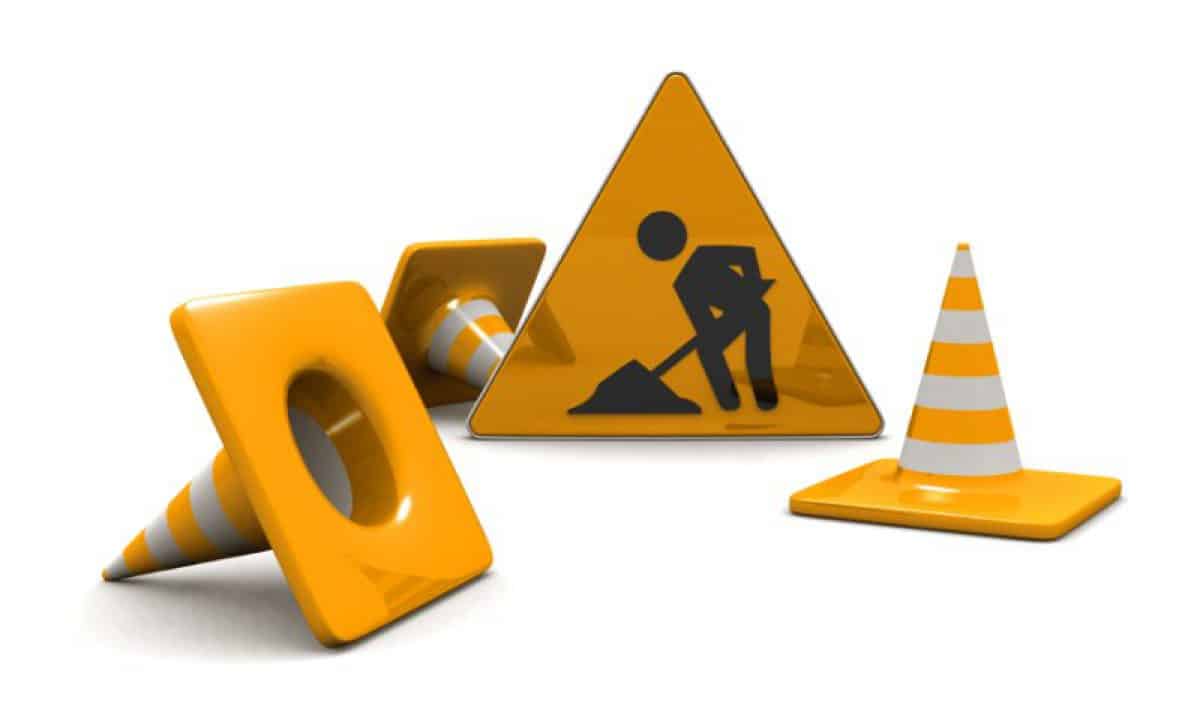
Reconstructive and aesthetic plastic surgery
Reconstructive and aesthetic plastic surgery
Reconstructive and Aesthetic Plastic Surgery repairs defects of the skin and soft parts, as well as the musculoskeletal system, cranial and peripheral nerves. It is not organ surgery, but ranges over all apparatus, covering and supporting and intervenes where morpho-functional reconstruction is needed. It acts where and when age modifies features, corrects where Mother Nature has not given her best.
All interventions are executable by our specialists.
RECONSTRUCTIVE PLASTIC SURGERY
The Reconstructive Surgery repairs all losses of substance, of skin, muscles and covers noble tissues such as bones and joints. In particular, it reconstitutes the continuity of the protective covering of the body, which is essentially the skin. In addition, this particular branch of Plastic Surgery repairs malformations, whether congenital or acquired, e.g., cheilopalatoschisis, craniofacial malformations, facial paralysis, many syndromes with multiple malformations, angiomas and vascular malformations, and the outcomes of removal of soft part tumors.
Executable treatments:
- Removal of benign skin formations (nevi, cysts, angiomas, lipomas, other)
- Removal of malignant skin formations (epithelioma, melanoma, other)
- Correction of scars.
- Decompression of peripheral nerves (carpal and tarsal tunnel syndrome, ulnar nerve and superficial peroneal nerve compression), including for diabetic neuropathy.
- Nerve repairs with sutures and grafts
- Dupuytren’s disease
(Aponeurotomy for Dupuytren’s Disease and lipofilling: minimally invasive treatment of Dupuytren’s Disease or retraction of the palmar aponeurosis: new surgery that avoids long incisions and allows faster healing - Correction of sidactyly of hands and feet
- Repair of tendon injuries
- Finger snap
- Onychocryptosis
- Mucosal cysts
- Skin grafts for loss of substance of the trunk and limbs.
- Proximal, axial and perforating flaps for substance loss reconstructions.
- Microvascular flaps.
- Treatment of ray dermatitis with flaps and fat grafts
- Excisions of vascular malformations and angiomas
- Gynecomastia
- Breast reconstruction with implants, flaps and fat grafts
- Correction of breast asymmetry with fat grafts or implants
- Introflected nipples
- Plastic for phimosis
- Rhinophyma
- Gill cysts and fistulas
- Dermoid cysts
- Thyroglossal duct cyst
- Parotid gland surgery
- Facial paralysis surgery
- Removal of xanthelasmas
- Correction of eyelid ptosis
- Entropion and ectropion
AESTHETIC PLASTIC SURGERY
The Aesthetic Surgery corrects cosmetic flaws and improves an individual’s appearance e.g. corrects the shape of the nose, fan ears, receding or prominent chin, breasts that are too small or too large, sagging abdomen, wrinkles in the face and neck, and “tired” eyelids.
Executable treatments:
- Blepharoplasty
- Correction of fan ears
- Forehead, face and neck lifting
- Rhinoplasty
- Mastopexy
- Breast augmentation with implants or with fat grafts
- Reduction mammaplasty
- Correction of cleft earlobes
- Abdominoplasty
- Arm and thigh lifts
- Liposculpture
- Lipofilling
- Dermabrasion
- Cosmetic surgery of female genitalia
